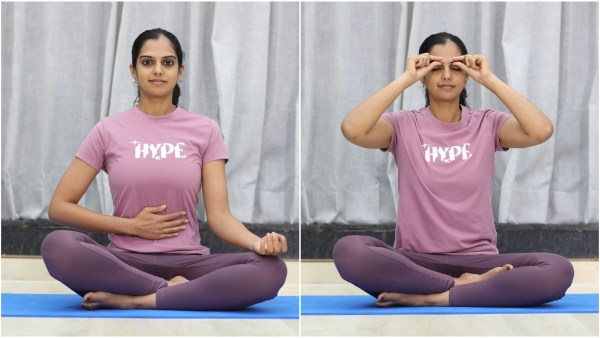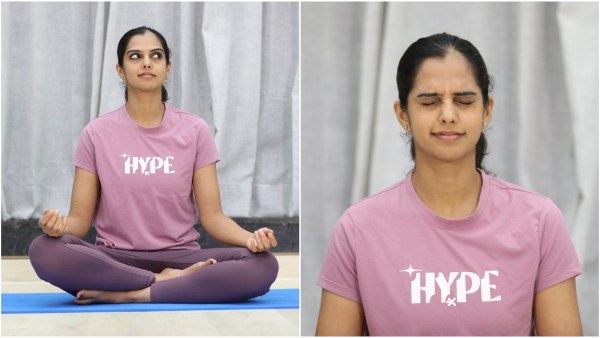With pollution levels soaring in the metros, yoga practitioners are left in limbo about continuing with their practices. As a solution, practising yoga indoors, with preferably an air purifier and closed windows, can offer protection. Still, it is best to avoid strenuous asanas as excessive sweating may cause discomfort.
What kind of yoga can be practised? Sukshma yoga and specific pranayamas can be practised during high pollution levels.
Different pranayamas enhance lung capacity and help flush out toxins from the body. But avoid breathing exercises that involve breathing from the mouth, like Shitali and Sheetkari, as these may aggravate discomfort in polluted conditions.
Nadishodhana: Also called alternate nostril breathing, this balances the body’s energy by clearing subtle channels (nadis). How to do it? Sit with your spine erect, left palm on the knee, and right hand near the nose. Close one nostril, inhale deeply from the other, then switch nostrils for exhaling. This process clears and calms the mind, providing balanced energy. Perform this for five minutes or nine cycles, keeping eyes closed for focus.

Bhastrika: A powerful breathing technique that involves forceful inhalation and exhalation, stimulating the nadis and promoting blood flow. Sitting upright with fists in front of your shoulders, inhale deeply, raise your hands, and exhale forcefully. Do three sets of 20 breaths to release stress and elevate energy.
 Bhastrika: Sitting upright with fists in front of your shoulders, inhale deeply, raise your hands, and exhale forcefully.
Bhastrika: Sitting upright with fists in front of your shoulders, inhale deeply, raise your hands, and exhale forcefully.
Kapalbhati: Known for bringing radiance to the face, kapalbhati utilizes abdominal muscles, drawing energy up from the Manipura (naval) chakra to the Agya (third-eye) chakra. Take a deep breath, then exhale sharply by pulling your navel inward. Repeat this 20 times per round, with three rounds recommended. This technique aids in detoxification and prevents respiratory issues related to pollution. Focus on the abdomen during practice to deepen the impact.
Sukshma Yoga: This involves a series of gentle stretches, alleviates stress and tension, making it ideal for a polluted environment.
 Kapalbhati (left) and Eyebrow pinches (right).
Kapalbhati (left) and Eyebrow pinches (right).
Eyebrow pinches: Pinch the eyebrows with thumb and forefinger, repeating 5-6 times to relieve forehead tension.
Eye rolls: Then roll eyes clockwise and counterclockwise 5-6 times to relax eye muscles.
Eye squeeze: Alternate squeezing eyes shut and opening wide, 10-15 times, to refresh vision.
 Eye Roll (left) and Eye squeeze (right).
Eye Roll (left) and Eye squeeze (right).
Ear pulling: Hold ears, pulling gently for 10-15 seconds, then rotate them as if cycling to improve circulation and ease tension.
 Ear Pulling
Ear Pulling
Jaw massage: Using fingers, massage along the jawline with an open mouth. This area often holds stress, which can be eased by gentle pressure.
Jaw movements: Open and close the jaw 8-10 times. Then move the jaw from side to side. This helps release tension stored in the facial area.
 Jaw massage (left) and jaw movements (right).
Jaw massage (left) and jaw movements (right).
Neck Rotations: While breathing in, tilt your head back; breathe out and bring your chin to your chest. Rotate clockwise and counterclockwise, 5-6 times each way, to relieve neck tension.
(The author is the Master Trainer at The Art of Living’s Sri Sri School of Yoga)
